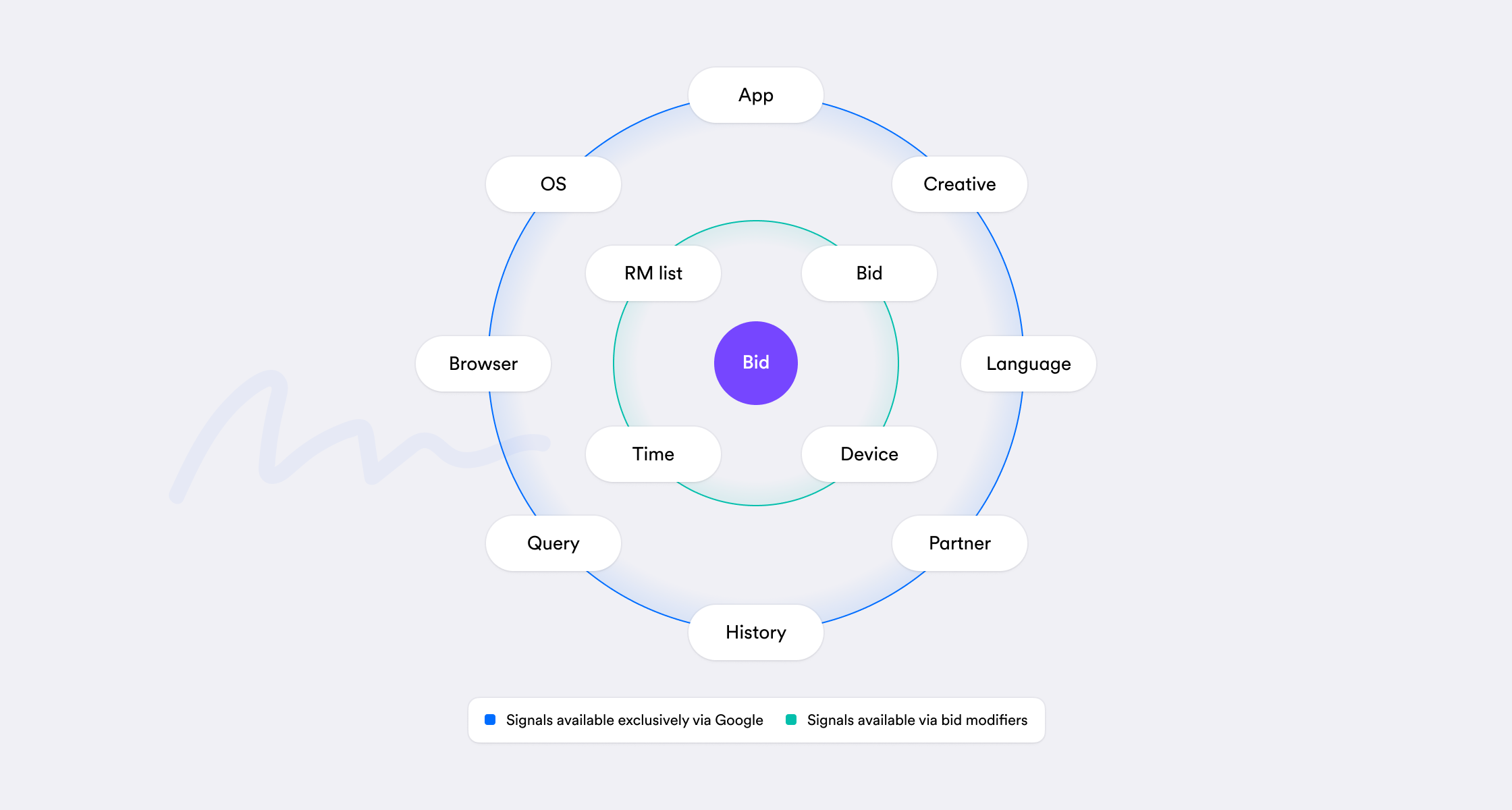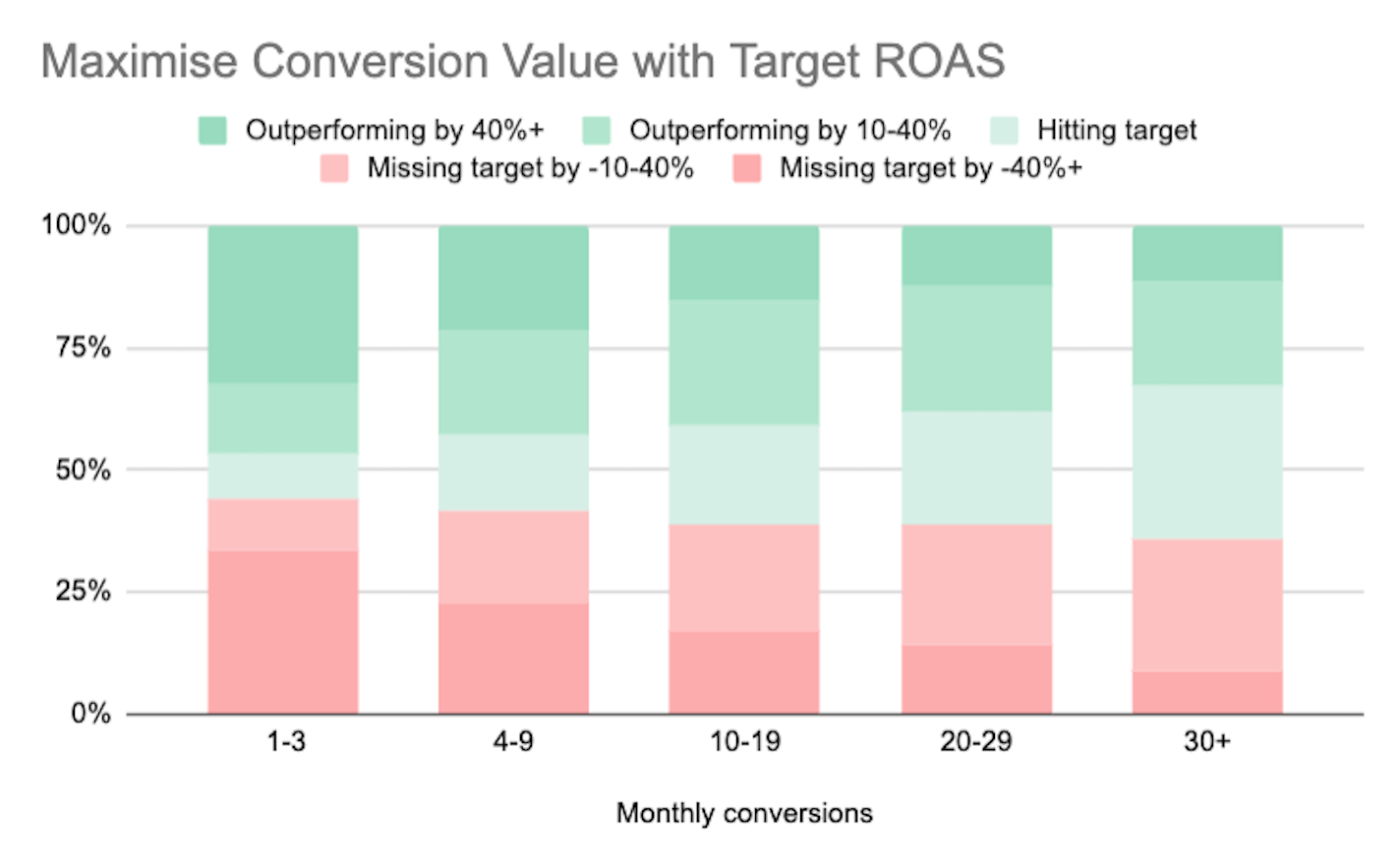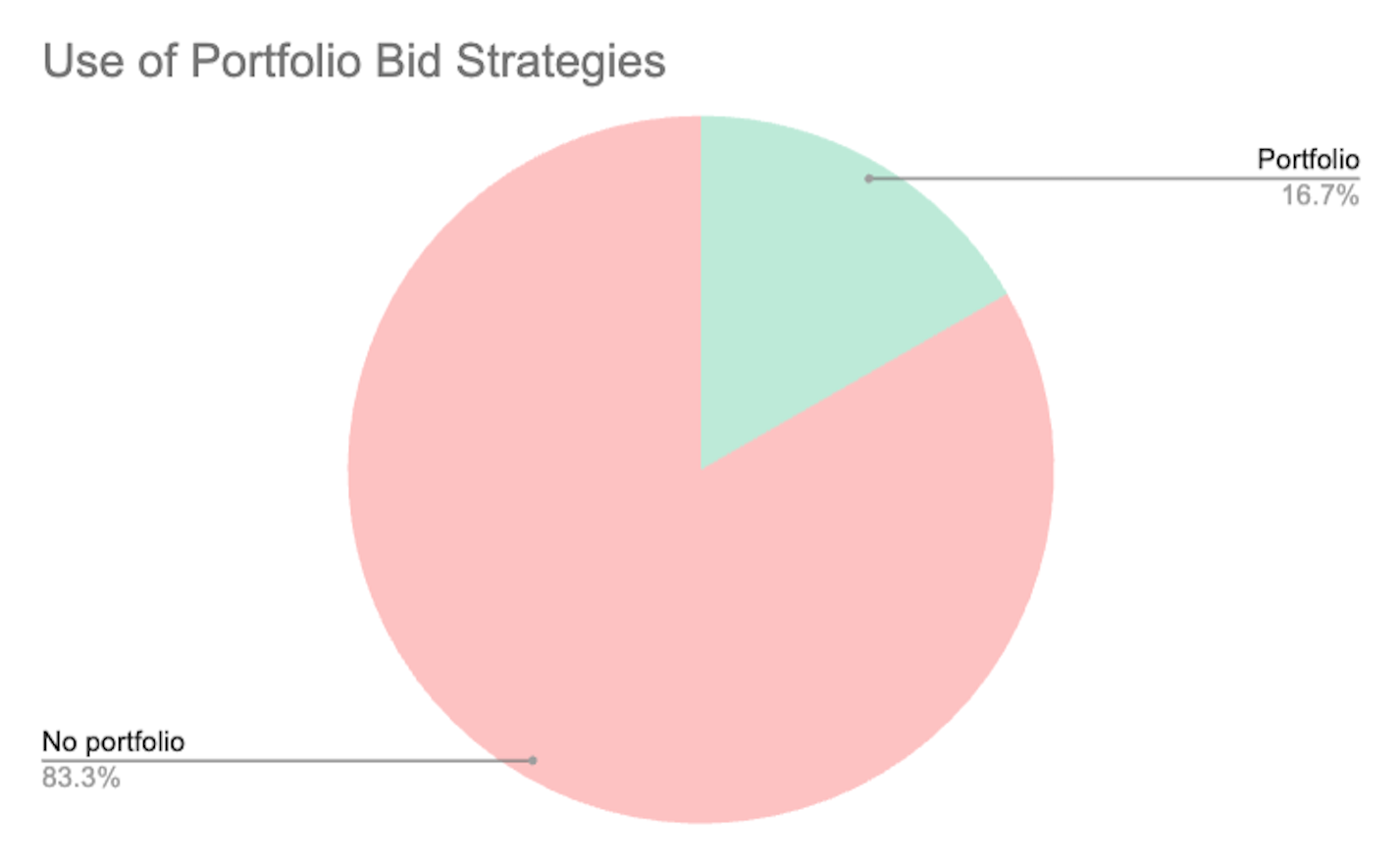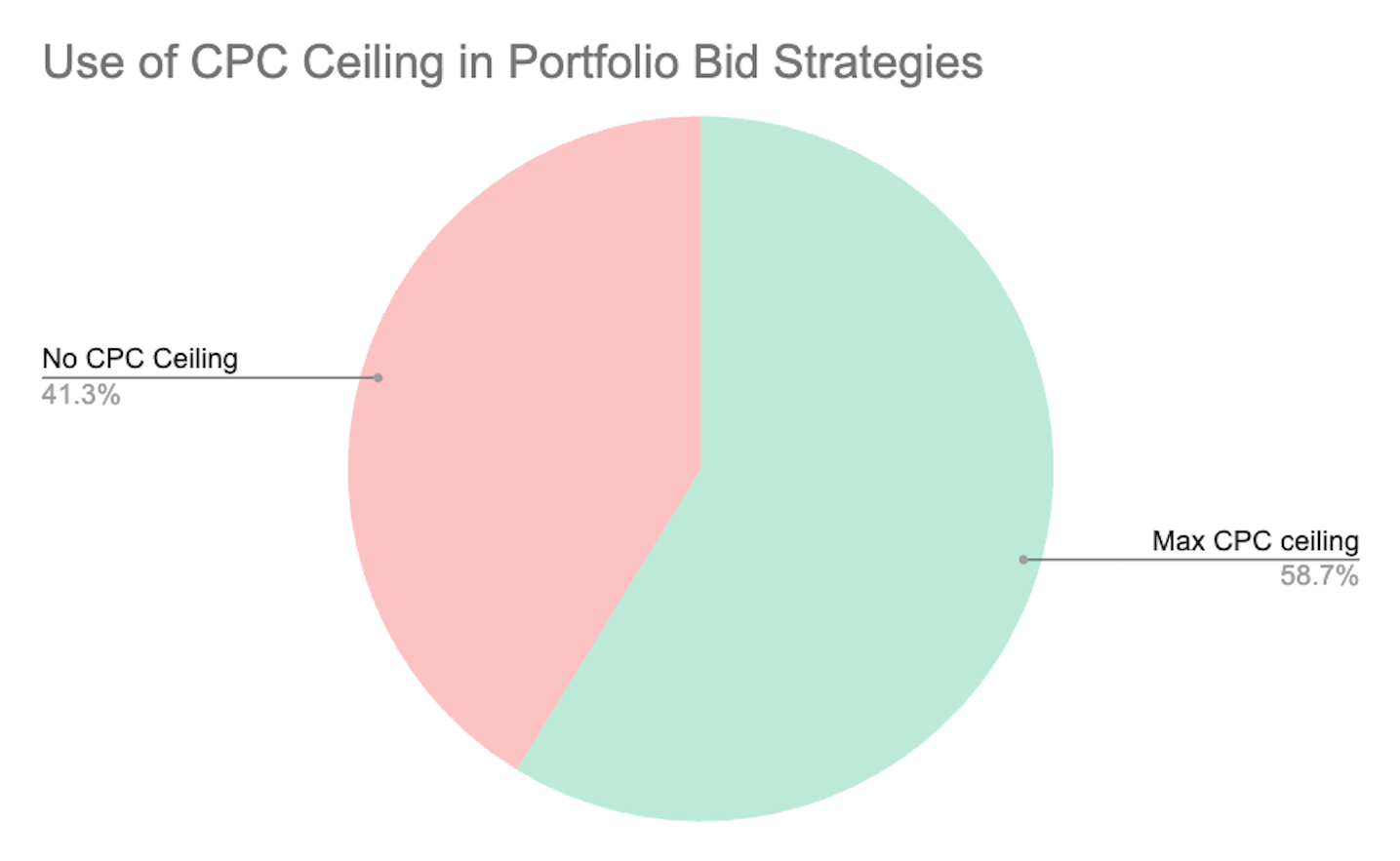Bidding Strategies
Last updated November 19th 2024
Every time there's an available ad slot, Google Ads initiates an auction to determine which ads will be displayed in that particular slot. Your participation in this auction is secured through your bid.
Bids are one of the two major inputs in Ad Rank (the other being Quality Score), which ultimately influences the visibility and performance of your ads. Ad Rank influences where your ad will show up in search results, and whether it will be shown at all.
Bidding strategies can be manual, automated, or smart. Automated and smart bidding strategies use machine learning to tailor bids in real-time for each auction. As a result, they optimise bids for specific user segments, rather than just relying on keywords.
These strategies leverage the vast amount of data that Google has on users and their online behaviours. As shown in below figure, smart bidding draws on a wider variety of signals than what advertisers have access to.
 Google uses exclusive signals not available to advertisers to automate bidding
Google uses exclusive signals not available to advertisers to automate biddingThere are currently eight main bidding strategies, each with varying levels of automation. Let's take a look at each one.
#Manual Bidding
Manual bidding can often be a great strategy to start with, especially if a campaign doesn’t yet have ample conversion data to feed smart bidding.
Quite simply, your max CPC is the maximum amount you are willing to pay for each click. You set an ad group level max CPC bid (called “default bid”) and you can then override that default bid with bids at the keyword level.
This bidding strategy offers more control, but it also requires a greater investment of time. To run efficiently, it needs frequent human input to bid effectively. This can be a good bidding strategy to use when starting a new campaign, particularly if you have a limited budget.
You might use this strategy to allow the campaign to gather data before switching to smart bidding. Doing so should lead to a more efficient start with smart bidding, as the algorithm is informed by historical data.
#Automated Bidding
#Enhanced CPC
Enhanced CPC, or eCPC, is an opt in feature on Manual CPC that helps increase conversions from manual bidding by automatically adjusting your bids for clicks that seem more or less likely to lead to a sale or conversion on your website.
This bid strategy identifies ad auctions that are more likely to lead to conversions or high-value conversions, and increases your max CPC bid accordingly. If a click seems less likely to convert, Google Ads will lower your bid.
Unlike Maximise Conversions and Maximise Conversion Value Smart Bidding, eCPC aims to optimise for conversions while keeping your average CPC below the max CPC that you set. It uses various auction-time signals such as browser, location, and time of day to tailor bids, but not to the full extent of other Smart Bidding strategies.
You can choose whether you want eCPC to optimise for conversions or conversion value. Previously, there was a 30% cap on how much Google would bid above your set CPC. However, this has since been removed, and eCPC can increase the bid infinitely as long as it respects the set average daily budget.
#Maximise Clicks
Maximise clicks looks for the largest amounts of clicks available within the daily budget of a campaign. This bidding strategy focuses solely on traffic with no consideration for conversions, and works best for driving upper funnel traffic.
Pair maximise clicks with bottom of funnel keywords
A way to force this bidding strategy into higher value traffic is by working with keywords, and targeting mainly lower funnel keyword phrases. The balance here is to allow it broadness enough to get a critical volume which will ensure the efficiency of the bidding strategy, while coaching it towards conversions via higher value traffic.
As a general rule it is better to avoid targeting broad match keywords with this bidding strategy as it will favour cheap, upper funnel traffic.
Resources & Further Reading
"When to use maximise clicks" 2:31-4:49 Solutions 8 explain in which cases maximise clicks might perform really well and what type of results you can expect from it.
#Target Impression Share
Target Impression Share is designed for reach and brand visibility, optimising towards showing your ad on the first page. This strategy is made for visibility and branding.
You can chose how high on the page you want to be shown by choosing to optimise for Anywhere on results page, Top of results page or Absolute Top of results page; as well as which percentage impression share you would like the campaign to achieve.
Pair Target Impression Share with Brand Campaigns
Target impression share can be a helpful strategy in situations where competitors are aggressively bidding on your brand terms. By choosing to be bid on impressions on the absolute top of the page you can ensure your ad is shown above your competitor’s.
This bidding strategy allows you to set a max CPC limit, and due to the potentially very high CPCs it is recommendable to do so.
Resources & Further Reading
"Understanding Target Impression Share Bidding" Fujisan Marketing shares an interesting strategy of using Target Impression Share as a way to initally build up conversion volume before switching to other conversion-oriented strategies.
#Smart Bidding
#Maximise Conversions
Maximise conversions' aim is to get you as many conversions as possible within your daily budget limit. This strategy bids aggressively, starting high to find your converting audience segments and then slowly dropping the bids down until reaching the threshold of getting less conversions, where it will raise the bids again.
Keep daily budgets tight with Maximise conversions
Maximise conversion’s priority is first and foremost to max out your daily budget. Second, it will try to get the most amount of conversions for that budget. It does not consider what is reasonable to pay for a conversion, so it is not uncommon to see cost-per-click (CPC) values in the search term report that are sometimes as high as 30 times the campaign's average!
Expect your daily budgets to be reached consistently, and therefore ensure you’re allocating daily budgets your happy to spend.
Maximise Conversions is a great way to find new, converting users quickly. If you have a budget to spend, this bid strategy can work well as a stepping stone to warm up traffic and discover the range of CPA you can expect. However, expect to see high CPCs with this strategy, especially during the learning period.
It is not possible to make bid adjustments to smart bidding strategies except for adding a -100% device bid adjustment, which enables you to for example avoid bidding on mobile traffic if you know your converters mainly come from laptop use.
Resources & Further Reading
How maximise conversions bids 1:55-3:28 In this video solutions 8 explains the inner workings of maximise conversions and how to best optimise it.
#Maximise Conversions with Target CPA
Previously known as Target CPA, this bid strategy has become a sub setting of maximise conversions. This strategy looks to get you as many conversions as possible at the average CPA (cost per action) you input. This means your individual CPA prices will range from lower to higher than your set CPA.
Setting a CPA target on maximise conversions gives you more than just a restricted version of the strategy: it changes the fundamental audience segments the algorithm targets. If your campaign has been running maximise conversions without a CPA target and you subsequently add one, you will likely see your cost go down while conversions staying the same. When setting a CPA target on maximise conversions, in the background Google is locking the campaign into bidding for the user segments it has already seen conversions from within your desired price range.
If you are bidding for keywords where there is a steady influx of mid to lower funnel new users searching for your keywords this bid strategy is likely to improve performance over time.
#What to Do if your tCPA Campaign Performance Stalls
If you see your campaign stalling or starting to atrophy after a while, this may be due to a lack of new problem-aware and solution-aware users. Depending on what keywords you are bidding on, you may need to find new users higher up the funnel and warm up your own traffic.
Imagine a client that sells water filtration systems for the home. There’s only a very small pool of solution-aware prospective buyers at the bottom of the funnel at any one time. The advertiser needs to target middle of funnel queries like "types of water filtration systems" or "ways to improve tap water quality" to create demand. An excessively restrictive CPA target would discourage the algorithm from bidding on higher volume middle-of-funnel queries. Instead, it would focus on the very small pool of bottom-of-funnel queries, ultimately causing campaign performance to stall.
To mitigate this, you may need to loosen the campaign’s CPA target. This will allow the algorithm to bid on more queries up the funnel, and be more prospective. To avoid it tipping too far in the other direction, you can add a max CPC bid (available with a portfolio bid strategy).
#How Conversion Volume impacts Performance
We looked into how well Google’s algorithm did at reaching its CPA targets for campaigns with different monthly conversion volume. We saw a clear correlation between conversion volume and the ability of the algorithm to reach its target.
 We queried 45.831 campaigns and found that the ability of the algorithm to achieve the set CPA targets have a strong correlation with conversion volume, with 50%+ of the targets being missed consistently when the campaign has less than 30 monthly conversions.
We queried 45.831 campaigns and found that the ability of the algorithm to achieve the set CPA targets have a strong correlation with conversion volume, with 50%+ of the targets being missed consistently when the campaign has less than 30 monthly conversions. The above graph illustrates the steady increase in performance in pace with conversion volume. 30 conversions per month seems to be a tipping point, where the algorithm manages to hit the target more often than not, while the opposite is the case at lower volume campaigns.
Ensure you have sufficient conversion data for Target CPA
Make sure you have enough historical conversion data of the conversion actions across the account, as well as sufficient monthly conversion volume on the campaign. These two supplement each other in assuring the campaign has enough data volume to perform well.
#Maximise Conversion Value
Maximise conversion value aims to get you the highest possible conversion value while staying within your daily budget. Compared to conversion volume based bidding strategies it is likely to bring in less conversions, but conversions with a higher value.
This bid strategy is ideal when you want to achieve a high ROAS and volume is less important. It will favour higher value sales over larger quantities of lower value sales, which over time means it is targeting a smaller audience.
In the best case scenario this means only spending on traffic which ensures profitability, in the worst case it can mean narrowing the targeting so much you miss out on traffic and the campaign stalls.
If for examples your customers tend to make smaller purchases before making larger ones, investing all the budget in high value sales means disrupting this pattern and losing out on customers with a high life time value.
Imagine your client is an e-commerce business that sells desk accessories. One of their most popular products is a very inexpensive mouse pad. In time, many mouse pad buyers progress to purchasing more expensive, higher margin items like premium leather desk mats, wireless charging stations, and premium desk lighting. If you were to set this client’s campaigns to maximise conversion value, there’s a risk that Google will overly focus on the sales of the highest value items at the expense of selling the low value mouse pads. This might harm the business long term because the campaign is investing all the budget in high value sales, disrupting the purchasing journey, and losing out on customers with a high life time value.
To remedy this, make sure to monitor overall sales and profits holistically without focusing solely on ROAS.
#Maximise Conversion Value with Target ROAS
Previously known as Target ROAS this bidding strategy has been incorporated as a sub setting within maximise conversion value. ROAS (return on ad spend) is the relationship between your ad spend and your sales expressed as a number (or sometimes a percentage) — if you spend $10 on ads and make $100 in sales then your ROAS is (10 / 100 ) * 100 = 10.
Finding sales that will result in a specific ROAS is a complex task for Google, and this bid strategy needs a solid bank of historical data as well as conversion volume to be efficient.
When you set a ROAS target on a maximize conversion value campaign you hone in on a narrower audience — Google will look for high intent users with behaviours corresponding to users who have previously converted at a ROAS similar to the target. As the audience narrows, volume becomes more important.
If you are looking to scale the campaign, you might find reducing the ROAS target will allow it the flexibility to find new users higher up in the funnel that can still be brought to conversion at the desired ROAS. Likewise if the campaign starts stalling, reducing the ROAS target might kickstart it without seeing ROAS reduce substantially.
Volume is essential for the performance of this bid strategy. If you have several campaigns using this bid strategy it can be beneficial to create a portfolio bid strategy — this way the algorithm will consolidate data from all participating campaigns and tend to perform better. Using a portfolio bid strategy also allows you to set a max CPC ceiling.
#How Conversion Volume Impacts Performance
We had a look at how good Google’s algorithm actually is at reaching its ROAS target within different ranges of conversion volume. We clearly see how the proportion of campaigns hitting their target grow steadily as monthly conversion volume increases.
 We queried 18.010 campaigns and found that the greater conversion volume it has, the better max conversion value with tROAS is at hitting its target, and generally the more conversions it has, the less it misses its targets.
We queried 18.010 campaigns and found that the greater conversion volume it has, the better max conversion value with tROAS is at hitting its target, and generally the more conversions it has, the less it misses its targets. Curiously, we also see how campaigns with lower conversion volume are overrepresented in both the extreme overperforming and underperforming segments. This reflects the more experimental behaviour of this bidding strategy when it has little conversion data to go on.
Feed the Algorithm as much Data as Possible
Make sure you have enough conversion data. Google recommends a minimum of 15 conversions per month, per campaign. As we’ve seen above, more is advisable. 30 conversions seem to be a magic number in securing a stable performance - above this the incremental performance uplift slows down significantly.
If you want to use this bidding strategy on a lower volume campaign, consider using a portfolio bid strategy. You are likely to see better results this way, as the algorithm gets more conversion volume by consolidating data from several campaigns.
#Progressing through Smart Bidding types
Smart bidding strategies can be organised in a hierarchy of automation. The higher up you go in the hierarchy, the more data and volume it needs to perform efficiently. The bidding strategies as organised from less to more automation are:
↓ CPC
↓ eCPC
↓ Maximise clicks
↓ Maximise conversions
↓ Maximise conversions with target CPA
↓ Maximise conversion value
↓ Maximise conversion value with target ROAS
(Target impression share is considered outside of this hierarchy as its goal of reach and ad placement differs from the above.)
Because of this hierarchical organisation you would typically start a campaign on the low level of the automation hierarchy, even if your marketing goal aligns more with strategies higher up on the ladder.
If you create a new campaign with the goal of getting as many conversions as possible for the best possible price, you might start a campaign out on CPC and allow it to collect some data before moving it on to eCPC, then maximise conversions, to eventually set a target CPA.
The more data you have when moving to a new bidding strategy, the more efficient it will be. If you are looking to grow fast and have budget to invest in getting the campaign up and running you can progress to any of the ‘maximise’ strategies faster. Without much data they are likely to have some wasted spend, but also help you prospect and find relavant audiences.
#Portfolio Bid Strategies
Smart bidding is all about data volume - the more data, the more efficient the smart bidding strategies will be. A portfolio bid strategy pools the data of the campaigns added to it, making it a powerful tool to use together with smart bidding.
Portfolio bid strategies are generally an underutilised tool, with most advertisers opting for individual bidding strategies:
 We queried 683.249 campaigns across 109.014 domains and found that only 16.7% of campaigns in eligible bidding strategy types were using portfolio bid strategies.
We queried 683.249 campaigns across 109.014 domains and found that only 16.7% of campaigns in eligible bidding strategy types were using portfolio bid strategies. Portfolio bid strategies have the added advantage of allowing you to set a max CPC bid on certain bidding strategies (Maximise conversion with target CPA, Maximise conversion value with target ROAs) where it is not available at the campaign setting level.
 Portfolio bid strategies unlock the possibilities of layering a minimum and maximum bid limit
Portfolio bid strategies unlock the possibilities of layering a minimum and maximum bid limitThis way of using smart bidding strategies with CPC limits is sometimes referred to as hybrid bidding, as it gives you back some of the control from manual bidding, while leveraging the power of smart bidding.
Many advertisers do not take advantage of the posibility of setting a max CPC. It can however be a great way to embrace automation while still avoiding extremely high CPCs which can cause your campaign to overall perform worse.
 Of 109.319 campaigns using a portfolio bid strategies in eligible bid strategy types, 58.7% had a max CPC ceiling set.
Of 109.319 campaigns using a portfolio bid strategies in eligible bid strategy types, 58.7% had a max CPC ceiling set.Opteo in collaboration with Google Ads Open Reach conducted a large scale data study to see if the highest range of CPC harms smart bidding campaign efficiency - click here to find out just how much spend is wasted through inflated CPCs.
Resources & Further Reading
"Hybrid Bidding: A Better Google Ads Bidding Strategy" by Harrison Carroll, an in depth guide on how to set up portfolio bid strategies for optimal performance.